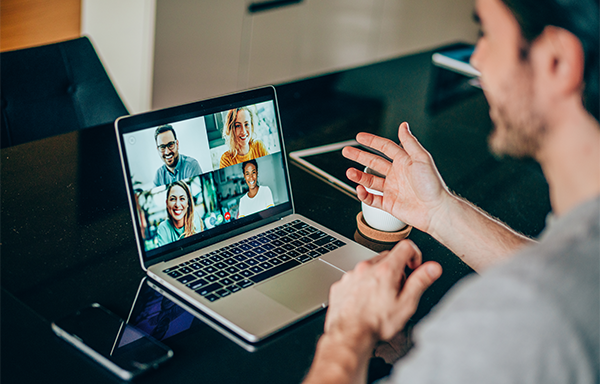How working from home has changed our posture.

Kim Griffin, Ocupational Therapist
Over the last 12 months I, like many others have had to change the way I work and one of the biggest downsides of this change is the amount of time I now spend sitting. As a children’s occupational therapist, I am always on the move: I’m on the floor, I’m on a scooter board, I’m down low in a tunnel or up high on playground equipment. I am not used to sitting still and I know most teachers would say the same.
Early years teachers are always on the move, sandpit anyone? Primary and secondary teachers are constantly moving about the class supporting their students. That’s before playground duty, forest school or PE. The same is true for support staff. Most educators are not used to the long periods of time spent staring at a screen that remote teaching brings.
These long periods of sitting can result in back pain, neck pain, and eye strain. In this post, I’ll explore a few tips to help reduce the consequences of sitting for long periods.
Firstly – Look at your desk and chair
As tempting as it is to sit on the sofa to work, sofas are usually not the best in terms of ergonomics. Most people are familiar with the beautiful 90/90/90 recommended sitting posture where hips, knees and elbows are all at 90 degrees. Whilst this is not possible for everyone to achieve, something closer to this is better than the sofa.
Have a look around the house. Some of you will be lucky enough to have a desk, for most, you will be using the dining room table. Test out the different chairs in the house; if you’re short, a cushion will lift you closer to the table and a few thick books under your feet will help you to touch the floor. If you’re tall, you may want to lift your monitor up higher, there’s some tips in the next section for this.
You can also consider standing for short periods. The kitchen bench is often an OK height to double as a standing desk although there are a lot of different contraptions available online to create standing desks too.
Consider an external keyboard and mouse (and screen if you can)
Laptops are notorious for creating neck pain. The screen is smaller and the position of the keyboard means you have to hunch over to access it whilst looking at the screen. If you purchase an external keyboard and mouse, you can set your screen up a bit higher. The easiest way to do this is on a pile of books, or with a sturdy storage container. (An upturned pot or casserole dish can help achieve the correct height if you’re short of books!)
Putting your screen at eye level means that you’re not looking down reducing both neck and eye strain. An external keyboard and mouse open up your shoulders more than a laptop keyboard will and means you will be sitting more upright. The overall effect is a better position for your body (especially if you have also considered your desk and chair).
Take frequent breaks
It is helpful to take 5-10 minute screen breaks every hour and ideally some that involves movement! Frequent shorter breaks through the day are more beneficial than trying to cram everything in and taking one longer break.
The 20-20-20 rule is also often recommended to help prevent eye strain. The rule states that every 20 minutes, you should look at something 20 feet away, for 20 seconds. I’ve got a few plants that are at the perfect distance. Lowering the screen and lighting brightness can also sometimes help reduce eye strain and if you have reading glasses, make sure you’re wearing them!
Also, try to eat lunch away from the computer. I am as guilty as the next person for squeezing in lunch whilst clearing my inbox, but I do find my concentration improves later on, if I take that break and eat lunch away from the computer.
Move every day!
I am fortunate in that I have been able to break up my day by going for a walk and doing yoga. I’ve become a big fan of Yoga with Adriene, she has a 10-minute targeted session for neck shoulders and upper backs and on days that I am particularly motivated, Joe Wicks also makes an appearance. Now that the days are getting longer (and warmer) it’s easier to get outside after work too.
Moving not only breaks up the day, but helps to stretch out our bodies after those long periods of sitting. Whilst it may be hard to get going, I know I never ever regret adding in some form of movement to my day. Hopefully you can find time too.
About Kim Griffin, Founder GriffinOT
Kim is a paediatric occupational therapist who specialises in providing online sensory and fine motor training for schools. She has spent the Covid lockdowns creating fine motor, sensory break and coordination videos for children to follow along with at home. This will translate well into the classroom and can be viewed here.